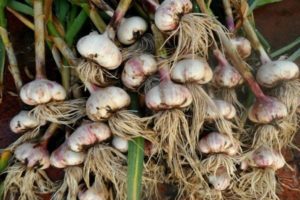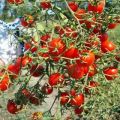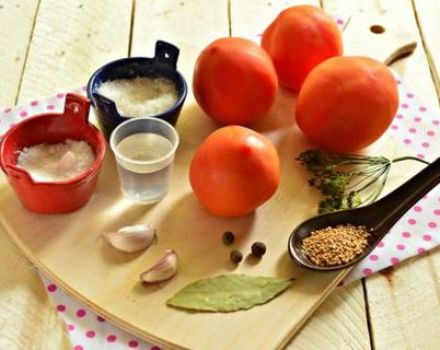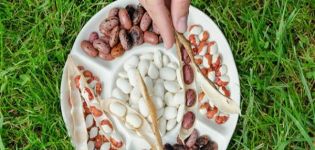Description and characteristics of the tomato variety amber bunch f1
Every summer resident is looking for such a variety of tomatoes that would delight both with early maturity and taste, as well as ease of care. The amber bunch of tomatoes can boast of such versatility.
Characteristics of the variety
This is an unpretentious, cold-resistant tomato that can be grown both in film shelters and in the open field. Able to create an ovary even at low temperatures. Tomato Amber cluster is formed into a round-shaped standard bush. The height of the stem is only 40 - 50 cm. The small size inherent in the hybrid makes it possible to plant 2 times more plants in the same territory than ordinary varieties of tomatoes.
Leaves are medium in size, dark green in color, traditional for members of the Solanaceae family. The tomato does not require pinching the apical bud, as it is a determinant hybrid, that is, it has limited growth. Stepson is not required. The plant itself forms only 1 - 2 stems. Inflorescences begin to form after 5-6 leaves. Strong stalks do not allow the fruit to fall off.
This is an early ripening variety, the period from the first shoots to harvest reaches from 85 to 105 days. It all depends on the weather conditions, if the tomatoes are grown in the open field, and on the temperature regime - in the case of planting in a greenhouse.

Description of fruits
A rounded and slightly plum-like shape, a flat and smooth surface, a weight of 50 to 70 grams and a yield of 2.5 kg per bush are worthy characteristics for an early maturing variety. Ripe tomatoes are even in size, have a rich amber-yellow color and a dense texture. They are great both for fresh consumption and for preservation with whole fruits. Miniature tomatoes will decorate a vegetable salad, any meat and even fish dish, and in blanks they look presentable and do not crack. Tomatoes of this variety have a pleasant taste and sweet aroma.
Growing recommendations
Due to its unpretentiousness, it will not be difficult for an experienced summer resident to grow a tomato Amber bunch F1, and the description of the rules for caring for it is quite standard.
Landing
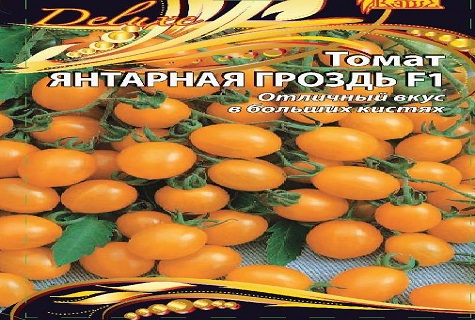
Sowing seeds should be done in March, or 50 days before planting in a permanent place. Seedlings should be dived after they give the first true leaves. If there is heating in the greenhouse, seedlings can be planted in it in April. In the case of landing in open ground under a film cover, you must wait until mid-May. A distance of 40 cm should be left between the plants, and 70 cm between the rows.
Hilling
The root system of tomatoes The amber bunch is located shallow in the ground, as a result of which not frequent, but abundant watering is required. To provide air access to the roots, you should loosen the soil and huddle the plants. This will further strengthen the root system and prevent it from drying out.
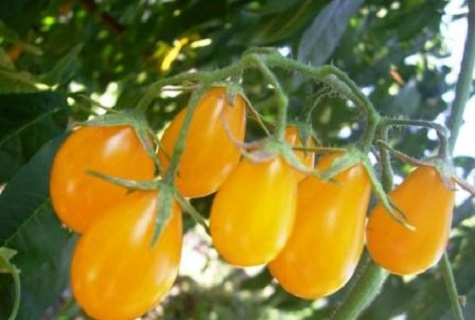
At the beginning of flowering, small tubercles can be seen on the root segment of the stem. These are the rudiments of adventitious roots that will develop and will additionally supply the plant with nutrients. The first hilling should be carried out precisely during this period, and then repeat it 2 - 3 times.
Top dressing
In order to ensure the formation of a strong bush and increase yields, it is good to feed these plants about once every three weeks. At the first time after planting, you need to give them the opportunity to overcome stress and get used to a new place, and after the formation of the first flower brush, fertilize for the first time. This period usually corresponds to the third week after disembarkation.
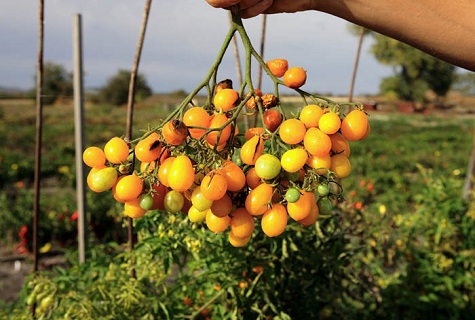
Tomato Amber bunch is not picky about the choice of options for feeding. It can be a solution of chicken manure with superphosphate, mullein, ordinary ash, or fermented grass.
Influence of diseases and pests
The hybrid boasts disease resistance, but for prevention purposes, periodic spraying with special agents can be carried out. Simple hilling will prevent pests from penetrating into tomato stems.
